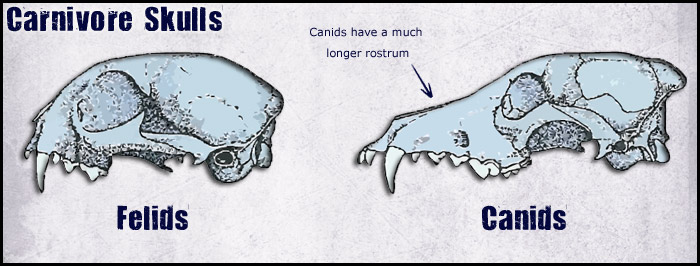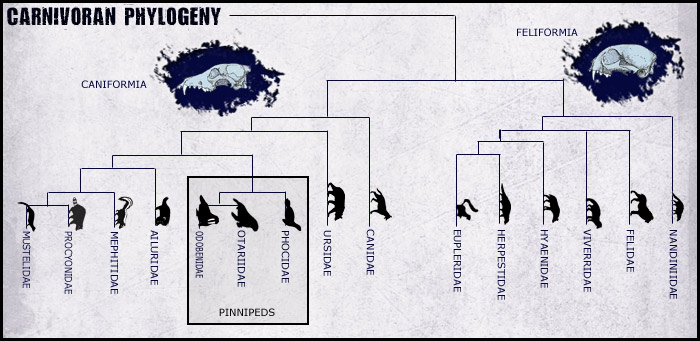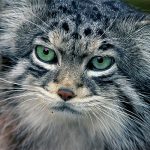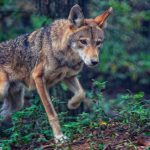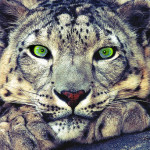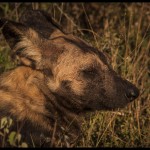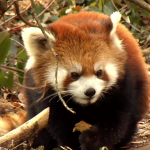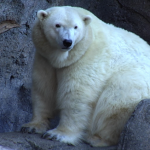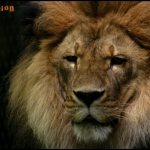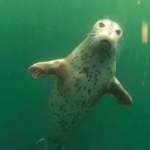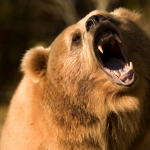Order Carnivora: The Carnivores
About the Carnivora
The order Carnivora includes a great deal of diversity. There are 15 families and about 268 species. Almost all of these species eat meat instead of the easier to obtain vegetable matter. Because of this, carnivorans are considered one of the major groups of mammalian predators. They occur naturally on all continents except Australia (the dingo was introduced some 4,000 years ago).
While most carnivorans are meat eaters, this is not a characteristic of this order. Instead, living carnivorans share morphological characteristics such as specialized teeth. Using morphology to group like organisms in this order, morphology is also used to split the order into two major suborders. The Suborder Feliformia and the Suborder Caniformia are split based on the structure of the auditory bullae and their carotid circulation.
Phylogeny of modern carnivores
This phylogeny is adapted and modified from Flynn et al. (2005)
Classification
Suborder Feliformia (Cat-like Carnivorans)
- Family Prinonodontidae (Asiatic Linsangs)
- Family Felidae (Cats – 40 species)
- Family Viverroideae (Civets – 35 species)
- Family Hyaenidae (Hyenas and Aardworlf – 4 species)
- Family Eupleridae (Malagasy Carnivores – 8 species)
- Family Herpestidae (Mongooses – 33 species)
Suborder Caniformia (Dog-like Carnivorans)
- Family Canidae (Dogs – 37 species)
- Family Ursidae (Bears – 8 species)
- Family Ailuridae (Red Panda)
- Family Mephitidae (Skunks – 10 species)
- Family Mustelidae (Ferrets, Weasels, Martens, Badgers, Wolverines, Minks, and Otters – 55 species)
- Family Procyonidae (Raccoons – 19 species)
- Family Odobenidae (Walrus)
- Family Otariidae (Sea lions, Eared Seals and Fur Seals – 14 species)
- Family Phocidae (True Seals – 19 species)
References
- Bonner, N. 1994. Seals and sea lions of the world. Facts on File, New York.
- Clark, T. W., M. B. Rutherford, and D. Casey, (eds.). 2005. Coexisting with large carnivores: Lessons from Greater Yellowstone. Island Press, Washington, DC.
- Flynn, J.J., and G.D. Wesley-Hunt. 2005. Carnivora. pp. 175-198 in The rise of placental mammals: origins and relationships of the major extant clades (K. D. Rose and J. D. Archibold, eds.) Johns Hopkins Univ. Press, Baltimore.
- Gittleman, J. L. (ed.). 1989. Carnivore behavior, ecology, and evolution, vol. I. Cornell Univ. Press, Ithaca, NY.
- Gittleman, J. L. (ed.). 1996. Carnivore behavior, ecology, and evolution, vol. II. Cornell Univ. Press, Ithaca, NY.

